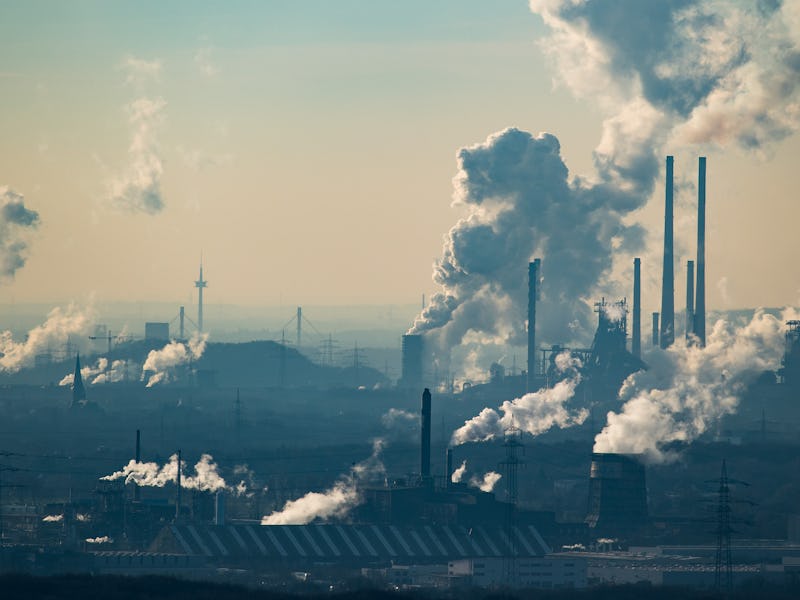Turning Carbon Emissions Into Fuel Sounds Like Perpetual Motion, But Real
Not exactly the clean energy you're used to.

Factories and manufacturing plants power almost everything we do on a daily basis, but they also cause great harm to the planet by releasing tons of carbon dioxide into the atmosphere.
The threat these emissions pose to the environment has spurred a worldwide effort to develop alternate forms of energy in an attempt to slow down global warming — and researchers at the Massachusetts Institute of Technology have come up with one of the wildest ways to do it we’ve come acrosslike perpetual motion: Take the carbon pollution and turn it back into usable fuel.
Instead of harnessing solar or wind energy, MIT researchers have come up with a system that sounds almost like perpetual motion: Take the carbon pollution o turn it back into usable fuel.
Carbon dioxide (CO2) is made up of three atoms, one carbon and two oxygen. As a compound, these atoms don’t do much other than pollute and warm our atmosphere. Taken apart, carbon can be used to create all sorts of energy sources, ranging from hydrocarbon fuel that powers machinery to methanol for automobiles.
The trick, the researchers found, is to split the CO2 into a lone oxygen atom and carbon monoxide. While carbon monoxide by itself is bad news — there’s a reason we have detectors for them in our houses (and if you don’t, maybe have a word with your super) — it can be combined with other elements like hydrogen to create useful fuels. What was once a pollutant is now a source of energy.
Diagram of carbon dioxide molecule.
The researchers were able to successfully split the CO2 atoms by superheating them and passing them through a special filter made out of a mineral called perovskite. That material has already been used to make low-cost solar panels and might just be the key to repurposing the world’s greatest pollutant.
According to a 2014 EPA global greenhouse emissions report, CO2 from burning fossil fuels makes up roughly two-thirds of the total greenhouse gases going into the atmosphere. Being able to take a portion of this major pollutant to power factories and vehicles would reduce emission levels and give us access to an otherwise untapped source of energy.
“It is important to use carbon dioxide to produce carbon monoxide for the conversion of sustainable thermal energies to chemical energy,” Xuefeng Zhu, a professor of chemical physics at the Chinese Academy of Sciences who was not involved in this research, said in a statement.
The researches are now looking into how to improve on their initially successful experiments by increasing the amount of gas that can be passed through the filter and how it compares to other methods of converting carbon emissions.
XiaoYu Wu pictured with the reactor his team used for the research. From MIT News.
Factories could potentially use this filter to lower their current levels of emissions without having to completely pivot to a source of alternate energy. Implementing this research on a larger scale could even allow factories to be powered through a process close to perpetual motion. Where emissions are continuously being fed through this filter and turn it into usable energy for the day.
Check out this video on making electricity from slow-moving water.